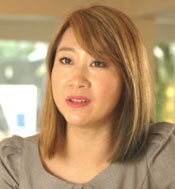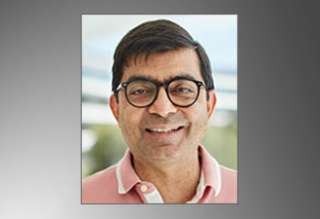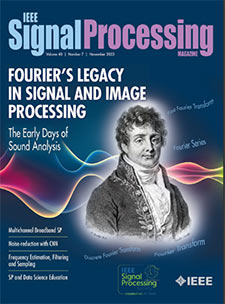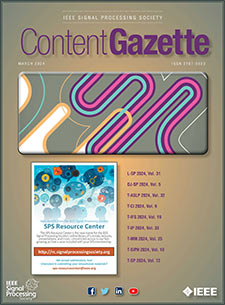- Our Story
- Publications & Resources
- Publications & Resources
- Publications
- IEEE Signal Processing Magazine
- IEEE Journal of Selected Topics in Signal Processing
- IEEE Signal Processing Letters
- IEEE/ACM Transactions on Audio Speech and Language Processing
- IEEE Transactions on Computational Imaging
- IEEE Transactions on Image Processing
- IEEE Transactions on Information Forensics and Security
- IEEE Transactions on Multimedia
- IEEE Transactions on Signal and Information Processing over Networks
- IEEE Transactions on Signal Processing
- IEEE TCI
- IEEE TSIPN
- Data & Challenges
- Submit Manuscript
- Guidelines
- Information for Authors
- Special Issue Deadlines
- Overview Articles
- Top Accessed Articles
- SPS Newsletter
- SigPort
- SPS Resource Center
- Publications Feedback
- Publications FAQ
- Blog
- News
- Dataset Papers
- Conferences & Events
- Community & Involvement
- Professional Development
- For Volunteers
- Information for Authors-OJSP
-
Home
Conferences14 April 2025 to 17 April 2025Conferences Events IEEE JSTSP Article IEEE Signal Processing Magazine IEEE TIFS Article IEEE TMM Article IEEE TSP Article Jobs in Signal Processing Lectures Machine Learning Seasonal Schools Signal Processing News SPM Article SPS Distinguished Lectures SPS Newsletter Article SPS Webinar SPS Webinars SPS Webinar Series Webinar webinars
-
Our Story
What is Signal Processing?

The technology we use, and even rely on, in our everyday lives –computers, radios, video, cell phones – is enabled by signal processing. Learn More » -
Publications & Resources
-
SPS Resources
- Signal Processing Magazine The premier publication of the society.
- SPS Newsletter Monthly updates in Signal Processing
- SPS Resource Center Online library of tutorials, lectures, and presentations.
- SigPort Online repository for reports, papers, and more.
- SPS Feed The latest news, events, and more from the world of Signal Processing.
-
SPS Resources
-
Conferences & Events
-
Community & Involvement
-
Membership
- Join SPS The IEEE Signal Processing Magazine, Conference, Discounts, Awards, Collaborations, and more!
- Chapter Locator Find your local chapter and connect with fellow industry professionals, academics and students
- Women in Signal Processing Networking and engagement opportunities for women across signal processing disciplines
- Students Scholarships, conference discounts, travel grants, SP Cup, VIP Cup, 5-MICC
- Young Professionals Career development opportunities, networking
- Get Involved
-
Technical Committees
- Applied Signal Processing Systems
- Audio and Acoustic Signal Processing
- Bio Imaging and Signal Processing
- Computational Imaging
- Image Video and Multidimensional Signal Processing
- Information Forensics and Security
- Machine Learning for Signal Processing
- Multimedia Signal Processing
- Sensor Array and Multichannel
- Signal Processing for Communication and Networking
- Signal Processing Theory and Methods
- Speech and Language Processing
- Technical Working Groups
- More TC Resources
-
Membership
-
Professional Development
-
Professional Development
- Mentoring Experiences for Underrepresented Young Researchers (ME-UYR)
- Micro Mentoring Experience Program (MiME)
- Distinguished Lecturer Program
- Distinguished Lecturers
- Distinguished Lecturer Nominations
- Past Lecturers
- Distinguished Industry Speaker Program
- Distinguished Industry Speakers
- Distinguished Industry Speaker Nominations
- Industry Resources
- IEEE Training Materials
- Jobs in Signal Processing: IEEE Job Site
-
Career Resources
- SPS Education Program Educational content in signal processing and related fields.
- Distinguished Lecturer Program Chapters have access to educators and authors in the fields of Signal Processing
- PROGRESS Initiative Promoting diversity in the field of signal processing.
- Job Opportunities Signal Processing and Technical Committee specific job opportunities
- Job Submission Form Employers may submit opportunities in the area of Signal Processing.
-
Professional Development
-
For Volunteers
-
For Board & Committee Members
- Board Agenda/Minutes* Agendas, minutes and supporting documentation for Board and Committee Members
- SPS Directory* Directory of volunteers, society and division directory for Board and Committee Members.
- Membership Development Reports* Insight into the Society’s month-over-month and year-over-year growths and declines for Board and Committee Members
-
For Board & Committee Members
Popular Pages
Today's:
- AASP Tutorial Articles
- (SiPS 2024) 2024 IEEE International Workshop on Signal Processing Systems
- (ACSSC 2024) 2024 Asilomar Conference on Signals, Systems, and Computers
- SPS SA-TWG Webinar: Maximum a Posteriori Penalty Function (MAP-PF) Multitarget Tracking
- Educational Activities
- The Neural-SRP Method for Universal Robust Multi-Source Tracking
- Conferences & Events
- Award Recipients
- Online Resources
- (SPAWC 2024) 2024 IEEE 25th International Workshop on Signal Processing Advances in Wireless Communications
- IEEE ICIP 2023 Photos - IEEE SPS 75th Anniversary
- Guidelines for Associate Editors
- Reuters Issues a Worldwide Ban on RAW Photos
- Distinguished Lecture: Prof. Farhan Baqai (Apple, USA)
- Signal Processing 101
All time:
- Information for Authors
- Submit a Manuscript
- IEEE Transactions on Image Processing
- 404 Page
- IEEE/ACM Transactions on Audio Speech and Language Processing
- IEEE Transactions on Information Forensics and Security
- IEEE Transactions on Multimedia
- IEEE Signal Processing Letters
- IEEE Transactions on Signal Processing
- Conferences & Events
- IEEE Journal of Selected Topics in Signal Processing
- Information for Authors-SPL
- Conference Call for Papers
- Signal Processing 101
- IEEE Signal Processing Magazine
Last viewed:
- EDICS
- Distinguished Lecture: Prof. Farhan Baqai (Apple, USA)
- Distinguished Lecture: Prof. Farhan Baqai (Apple, USA)
- SPS SA-TWG Webinar: Maximum a Posteriori Penalty Function (MAP-PF) Multitarget Tracking
- Award Recipients
- SPS Webinar: Image-to-Image Translation: Methods and Applications
- (ACSSC 2024) 2024 Asilomar Conference on Signals, Systems, and Computers
- Reuters Issues a Worldwide Ban on RAW Photos
- (SiPS 2024) 2024 IEEE International Workshop on Signal Processing Systems
- The Neural-SRP Method for Universal Robust Multi-Source Tracking
- Editorial Board
- (DCC 2024) 2024 Data Compression Conference
- Conferences & Events
- Online Resources
- AASP Tutorial Articles
Series to Highlight Women in Signal Processing: Dr. Pascale Fung
You are here
Newsletter Menu
Newsletter Categories
Top Reasons to Join SPS Today!
1. IEEE Signal Processing Magazine
2. Signal Processing Digital Library*
3. Inside Signal Processing Newsletter
4. SPS Resource Center
5. Career advancement & recognition
6. Discounts on conferences and publications
7. Professional networking
8. Communities for students, young professionals, and women
9. Volunteer opportunities
10. Coming soon! PDH/CEU credits
Click here to learn more.
News and Resources for Members of the IEEE Signal Processing Society
Series to Highlight Women in Signal Processing: Dr. Pascale Fung
 Dr. Pascale Fung is a Professor at the Department of Electronic & Computer Engineering and the Department of Computer Science & Engineering at The Hong Kong University of Science & Technology (HKUST). She is an elected Fellow of the International Speech Communication Association for “fundamental contributions to the interdisciplinary area of spoken language human-machine interactions”. She is also the Director of the HKUST Center for AI Research (CAiRE), an interdisciplinary research center on top of all four schools at HKUST. She is the founding chair of the Women Faculty Association at HKUST. Dr. Fung is an expert on the Global Future Council, a think tank for the World Economic Forum. She represents HKUST on Partnership on AI to Benefit People and Society.
Dr. Pascale Fung is a Professor at the Department of Electronic & Computer Engineering and the Department of Computer Science & Engineering at The Hong Kong University of Science & Technology (HKUST). She is an elected Fellow of the International Speech Communication Association for “fundamental contributions to the interdisciplinary area of spoken language human-machine interactions”. She is also the Director of the HKUST Center for AI Research (CAiRE), an interdisciplinary research center on top of all four schools at HKUST. She is the founding chair of the Women Faculty Association at HKUST. Dr. Fung is an expert on the Global Future Council, a think tank for the World Economic Forum. She represents HKUST on Partnership on AI to Benefit People and Society.
Dr. Fung's research interest lies in building intelligent systems that can understand and empathize with humans. To achieve this goal, her specific areas of research are using statistical modeling and deep learning for natural language processing, spoken language systems, emotion and sentiment recognition, and other areas of AI. She was an Associate Editor for the IEEE/ACM Transactions on Audio, Speech and Language Processing and the Transactions on Association for Computational Linguistics. She is the Technical Program Chair for IEEE ICASSP 2018, 2020 and 2022. She served as a Committee Member of the IEEE Signal Processing Society Speech and Language Technology Committee (SLTC) for six years.
Dr. Fung received her Ph.D. in Computer Science from Columbia University in 1997. She worked and studied at AT&T Bell Labs (1993~1997), BBN Systems & Technologies (1992), LIMSI, CNRS, France (1991), Department of Information Science, Kyoto University, Japan (1989~1991), and at Ecole Centrale Paris, France(1988). A fluent speaker of seven European and Asian languages, she has been particularly interested in multilingual speech and natural language issues.
We approached her with a few questions.
Q. Please tell us about yourself and your background.
I spent my childhood during a tumultuous time in China with scarce resources and little future prospects as my family was deemed politically unacceptable. My only refuge was reading. I learned more about science through non-fiction books, less controversial and more abundantly available during the political climate at the time. At age 7 I read the first science fiction book describing the world of the future where people would shop from home, flu would be curable, and robots would take care of our daily routines. I wanted to build that future. I wanted to build robots.
I went to an all-girls English secondary school in Hong Kong where a lab technician taught me how to solder circuit boards and build electronic devices. I started the Electronics Club in school but eventually, I was the President, the Secretary and the only member of the society. Nevertheless, the weekends and summer holidays I spent in the lab building things and doing experiments opened my eyes to the world of engineering. I decided to major in electrical engineering at university.
In college, my favorite subject was signal processing. My graduate thesis was on computer vision for space crafts, which combined my interests in signal processing, AI and science fiction. While on an exchange program from my university in the US to France, I attended ECP, an engineering school in Paris where I chanced upon a project in the then little known field of speech recognition. That was in 1988, and the beginning of my 30-year career path on signal processing and artificial intelligence. Attending Kyoto University in Japan later, I published my first research paper and it was on speaker recognition using machine learning. This work enabled me to find employment with BBN, a DARPA contractor in Mass., and a pioneer in speech recognition. While at BBN, we built the world’s first large-vocabulary (i.e. 5000 words), continuous (i.e. no need to pause between words), and speaker-independent speech recognition system in 1991. I later left BBN to pursue a Ph.D. in Computer Science at Columbia University. My advisor, Prof Kathleen McKeown, specialized in Natural Language Processing, a related but separate field from Speech Recognition. Under her mentorship, I worked on NLP using statistical and machine learning approaches, at the time a novel and controversial approach. I worked with her and a mentor at Bell Labs and came up with a way of using signal processing to solve language problems. That became my Ph.D. thesis and I also became one of the earliest proponents of statistical and machine learning approaches for NLP. I guest-edited the first issue on ML methods for speech and language in 2004. It was a time when we saw many heated debates on empiricists versus rationalist approaches in NLP and AI in conferences. More engineers started to enter the NLP field, traditionally dominated by linguists. We started a separate conference, EMNLP, and special interest group.
Q. Why did you become a full professor at HKUST?
For over 20 years, I was a researcher with one foot in each of the two different fields, signal and speech processing on one hand, and natural language processing/computational linguistics on the other hand. In 1997, I was recruited by Hong Kong University of Science & Technology, and jumped at the opportunity to do a “start-up university”. Driven by a desire to solve the problem of the human-machine interface, I started a research group to work in both signal processing and computational linguistics. Given my background and our location in Hong Kong, we have been working on multilingual speech and language processing. In recent years we also work on multimodal, including speech, language, and facial expression emotion recognition, in order to make machines more empathetic in their response to humans.
Q. How does your work affect society?
When I started working in the area of speech recognition 30 years ago I never imagined that speech and language systems would be adopted by so many users today, from smartphone assistants, phone banking, smart speakers, call centers, to robots. As the technology matured in recent years, we now need to worry about how what we do would affect society in both beneficial and adverse ways. There are many ethical and societal implications of what we do than ever before. We must ensure that the systems we build are fair and unbiased, and we must ensure data safety and privacy for the users as well.
Q. What challenges you had to face to get where you are today?
I think I have encountered the common challenges many, if not all, women face in STEM fields, namely discouragement from others from relatives to school teachers to strangers, telling me that my interest in STEM or pursuing a Ph.D. in engineering was “not for a girl”. Even as a faculty member I have been constantly told that I do not fit the image of an engineering professor. Curiously, those comments never really affected me in a negative way but rather acted as fuel for my drive to prove others wrong. Credit goes to my parents who, despite being in a field totally unrelated to STEM (they are both artists), have always treated my choices with respect and encouraged independent thinking and hard work since I was a young girl.
Other than being a minority gender in STEM, my other challenge came from being in two different fields. I majored in electrical engineering as an undergrad but got my graduate degrees in computer science. My research is in both signal processing and computational linguistics. This means I had to publish in two different areas to get tenured and promoted. In the end, these challenges provided opportunities for me as well. I have benefited from research ideas in two areas that gave the fruit to novel approaches.
Q. What advice would you give to scientists/engineers in signal processing?
Embrace change. Embrace disruptions. Every change in the field is an opportunity for us to be more creative and do better research. I would also advise us in signal processing to work with colleagues from other fields, such as AI and robotics, life science, business, or the creative arts, to find new and beneficial applications.
Q. Anything else you would like to add?
The popularity of AI and machine learning is fuelling growth in a more diverse group including women students in all related fields, including signal processing. Our society should embrace this trend, set to be long term, to attract and retain as many women students as possible. The various women groups, such as Women in SP, is both enabling and supported by such growth.
Open Calls
Education & Resources
Conference News
Society News
Chapter & DL News
SPS on Twitter
- DEADLINE EXTENDED: The 2023 IEEE International Workshop on Machine Learning for Signal Processing is now accepting… https://t.co/NLH2u19a3y
- ONE MONTH OUT! We are celebrating the inaugural SPS Day on 2 June, honoring the date the Society was established in… https://t.co/V6Z3wKGK1O
- The new SPS Scholarship Program welcomes applications from students interested in pursuing signal processing educat… https://t.co/0aYPMDSWDj
- CALL FOR PAPERS: The IEEE Journal of Selected Topics in Signal Processing is now seeking submissions for a Special… https://t.co/NPCGrSjQbh
- Test your knowledge of signal processing history with our April trivia! Our 75th anniversary celebration continues:… https://t.co/4xal7voFER
Home | Sitemap | Contact | Accessibility | Nondiscrimination Policy | IEEE Ethics Reporting | IEEE Privacy Policy | Terms | Feedback
© Copyright 2024 IEEE – All rights reserved. Use of this website signifies your agreement to the IEEE Terms and Conditions.
A not-for-profit organization, IEEE is the world's largest technical professional organization dedicated to advancing technology for the benefit of humanity.








